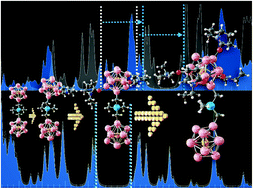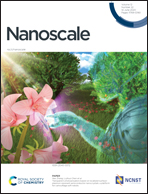A ligand-induced homojunction between aluminum-based superatomic clusters†
Abstract
A superatomic molecule formed by joining two metallic clusters linked by an organometallic bridge can behave like a semiconductor and the addition of ligands can induce a significant energy level shift across an inter-cluster homojunction. This shift is induced by the N-ethyl-2-pyrrolidone ligands, and the placement of the ligands strongly affects the direction of the dipole moment, including the case where the dipole moment is parallel to the cluster interface. This computational study provides an alternative strategy for constructing nanometer-scale electronic interfaces between clusters mimicking semiconductor motifs. The semiconducting features in the PAl12 clusters emerge from the grouping of the quantum states in a confined nearly free electron gas that creates a substantial energy gap. An organometallic Ge(CH3)2(CH2)2 bridge links the clusters while maintaining the cluster's electronic shell structure. The amount of level shifting between the bridged clusters can be changed by controlling the number of ligands. Attaching multiple ligands can result in a broken gap energy alignment in which the HOMO level of one cluster is aligned with the LUMO level of the other bridged cluster. Furthermore, the singly ligated bridged superatomic molecule is found to exhibit promising features to separate the electron–hole pairs for photovoltaic applications.



 Please wait while we load your content...
Please wait while we load your content...